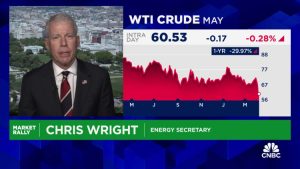Britons don’t realise how lucky they are to have their tax-free £20,000 Stocks and Shares ISA allowance. Few other countries offer such a brilliant incentive to invest. And too many of us squander the opportunity.
Happily, my Stocks and Shares ISA is far from empty. But if it was, I’d be going flat out to fill it up with top FTSE 100 dividend stocks.
The most generous offers yield between 5% and 10% a year. Buying equities involves more risk than cash savings, but should deliver superior total returns over time That’s what I’ve found, anyway.
Time to get cracking
Few of us are lucky enough to start investing with a big fat lump sum, but regular monthly amounts can roll up dramatically over time. Online ISA platforms allow investments from as little as £50 a month. To use up my full £20k ISA, I’d have to invest £1,667 a month.
That’s way more than I can afford, sadly. However, let’s say I gave it my best shot and invested £500 a month.
Please note that tax treatment depends on the individual circumstances of each client and may be subject to change in future. The content in this article is provided for information purposes only. It is not intended to be, neither does it constitute, any form of tax advice. Readers are responsible for carrying out their own due diligence and for obtaining professional advice before making any investment decisions.
FTSE 100 stocks divide into two broad camps. Growth stocks are typically smaller, fast-growing companies that (with luck and a fair wind) will boost my capital over time. I primarily buy the other type, dividend income stocks. These are often larger, blue-chip companies that may find growth harder to come by, but reward loyal shareholders with a regular share in their profits.
Inevitably, there’s crossover between the two. Some growth stocks pay dividends, while plenty of income stocks deliver capital growth.
Lately, I’ve been splurging on FTSE 100 dividend stocks, which are available at cheap valuations and offer high yields. I’m hoping for some share price growth too, once interest rates peak and recession fears recede.
I recently bought corrugated paper specialist Smurfit Kappa Group, which looked cheap trading at seven times earnings (a figure of 15 is seen as fair value, typically) while yielding almost 5%.
I’m investing for decades
I’ve also bought Lloyds Banking Group, which trades at around six times earnings and is set to yield 6% this year. I snapped up Legal & General Group, which trades at 6.2 times earnings today and yields a smashing 8.15%.
The true rewards of investing are long-term. History shows that the FTSE 100 has delivered an average annual return of 6.89%, with all dividends reinvested.
If I increase my contribution by 3% a year to keep pace with inflation, I’d have a pretty nifty £79,547 after a decade. Not bad, but with time I’d hope to do much better. If I carried on for 20 years I’d have £261,783. Now that’s more like it. After 30 years I’d turn that empty ISA into a whopping £653,367.
An investor who started early, say at age 25, could turn £400 a month into a whacking £1,465,201 by the time they turn 65. That’s the reward of a lifetime of savings.
Naturally, equity returns are not guaranteed. My portfolio of stocks could generate more than the FTSE 100 average, or less. Long-term investing requires stamina, but it’s the best way I know of building wealth over time. All tax-free, of course.
This post was originally published on Motley Fool




